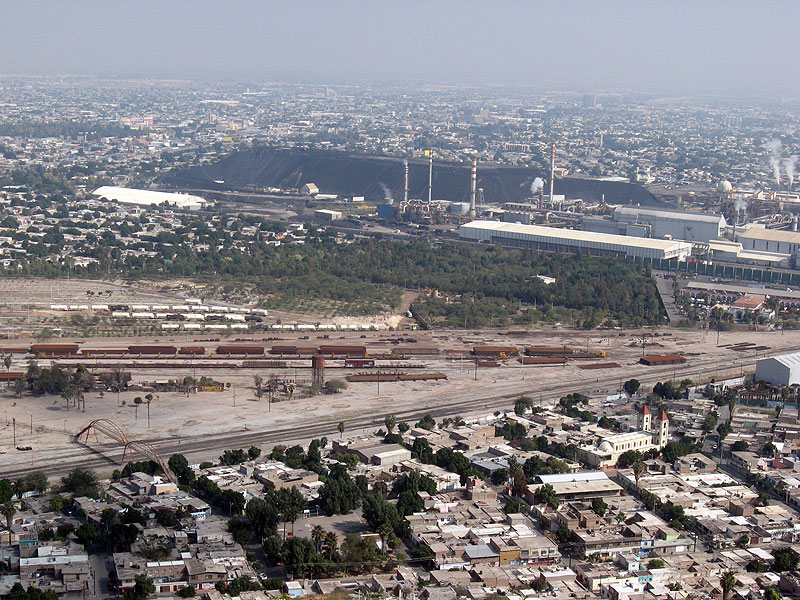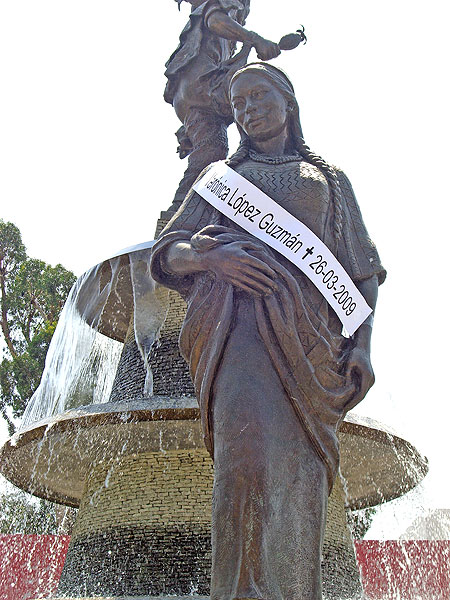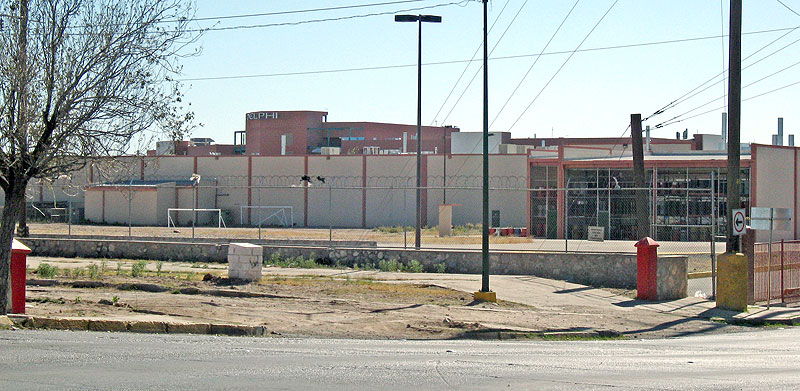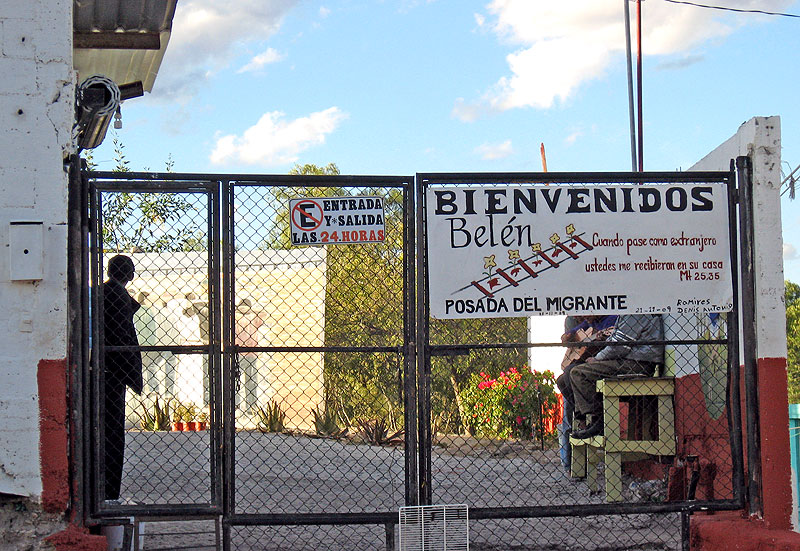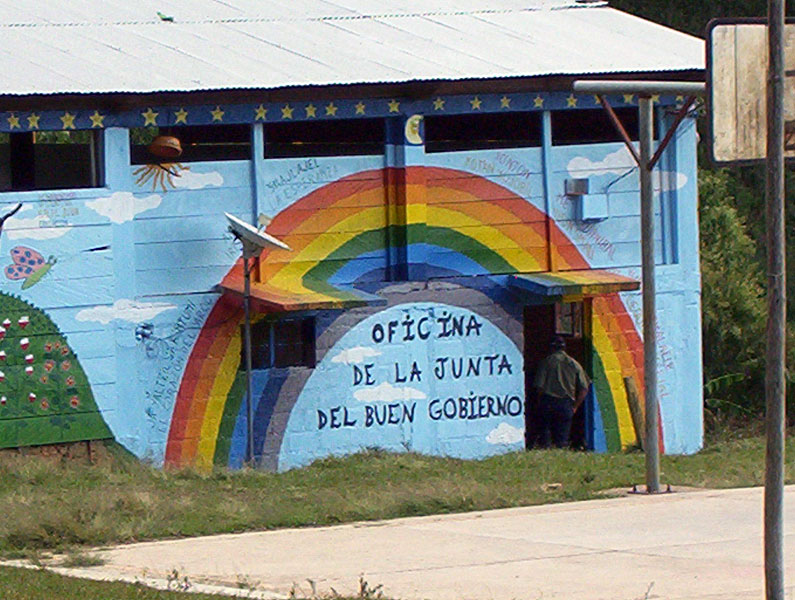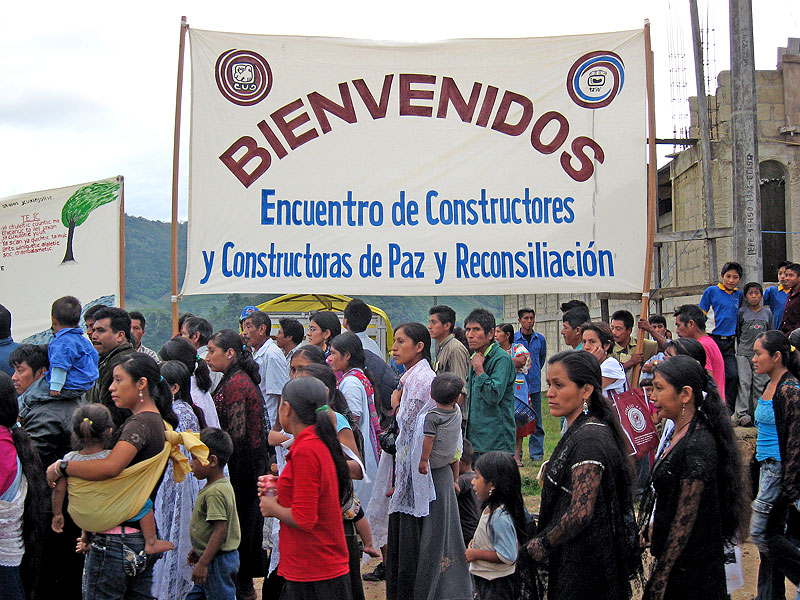2009
29/01/2010
ANALYSIS: Serious challenges to Mexico regarding human rights
31/03/2010Much has been written over the past few decades about the northern border of Mexico. Legal and illegal migration as well as other kinds of trafficking – similarly legal and illegal – are distinct phenomena that have developed along the 3,326 kilometres of the Mexico-U.S. border.
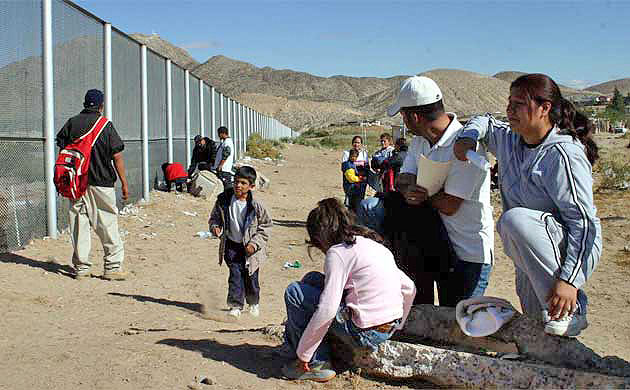
© Grupo marxista
Until recently, the southern border of Mexico has been afforded much less attention. With a length of 1,139 kilometres, of which 962 km are shared with Guatemala and 176 km with Belize, this southern border passes along the Mexican states of Chiapas, Tabasco, Campeche and Quintana Roo.
After September 11, 2001, the United States, concerned with domestic security, put pressure on the Mexican government to enhance its control of the southern border. Since then, however, problems along this border have developed, thus creating an alarming situation with which journalists, investigators, and activists have concerned themselves.
When considering the similarities between the two borders, one of the first things that stands out is the similarity between the situation experienced by Central Americans on the southern border of Mexico and that of Mexicans attempting to enter the United States via the northern border. Both are equally subject to danger and often find themselves kidnapped, robbed, victims of trafficking rings (of people as of drugs), deported or even killed.
Legal Migration: Limited options for many
The border separating Mexico and the United States is one of the busiest in the world. According to statistics, about 250 million people cross the Mexico-U.S border legally every year. Mexico’s Instituto Nacional de Migracion (National Migration Institute) estimated that more than two million people crossed the Mexico-Guatemala border in 2004, of whom 400,000 were Central Americans entering without authorization.
Guatemalans can use a Forma Migratoria de Visitante Local (Local Visiting Permit) for access to Mexican territory up to 100 kilometres from the border. Additionally, the Forma Migratoria de Trabajador Fronterizo (Border Work Permit) is available for people who can show they have an offer of work. This permit is exclusively for Guatemalans and Belizeans who live near the border.
By the same token Mexicans can enter the United States through the northern border with a Border Crossing Card, also known as a “laser visa.” This visa gives permission to those Mexicans who qualify for it to cross the border by land. One of the preconditions for attaining this visa is having very strong economic ties to Mexico, to ensure that the person in question will eventually return to her country of origin.
Undocumented migrants represent the vast majority of people crossing both Mexico’s northern and southern borders. For each year between 2000 and 2009, the average number of Mexicans who entered the United States without proper documentation was calculated to be 220,000. This estimated population constitutes a bit more than half the total number of undocumented migrants in the States.
Controlling Illegal Migration in the United States and Mexico
In an effort to contain immigration, the United States began construction of a wall along its border with Mexico in 1994. Stretches of this wall now exist in parts of California, Arizona, New Mexico and Texas. The structure features a retaining wall, high-intensity lighting, motion detectors, electric sensors, as well as night-vision equipment used by the Border Patrol. Permanent surveillance is provided with the help of all-terrain vehicles and armed helicopters. A citizen’s group called the Minutemen Project was founded in 2005 to “discourage” migration; it has a notorious reputation for “hunting migrants”.
Since the beginning of the construction of the wall, migration routes have changed. Now migrants cross at more dangerous sites, such as the Rio Bravo, or through the desert. Every year approximately 500 people die from dehydration, cold, drowning, or simple exhaustion.
“It depends on the route they take you on. There are shorter paths– if you want to risk your life there’s a road that takes one hour, one that takes two-and-a-half-days, and one that takes one week. I knew someone from another community who passed through the desert. He didn’t make it; he died. The migra found his body, but his parents don’t want to believe that their son has died.“[1]
On the other hand, thousands of Central and South Americans cross the southern border of Mexico in an attempt to reach the northern border to eventually find work in the United States. Actually crossing the border is not as difficult as what migrants typically encounter within Mexican territory. In a way, it seems that all of southern Mexico – at least until the capital – has been transformed into a giant border zone, with constant migration checkpoints and intense surveillance.
In principle, Mexicans can travel freely within their own country and hence are free to travel to the country’s northern border. However, there are a growing number of cases of Mexicans (constituted of vulnerable groups such as women, children, and indigenous individuals) who report that they are victims of the same injustices Central Americans encounter on their journey.
Just as the routes for crossing into the U.S. have changed, routes in the south have changed according to existing dangers, possibilities, and surveillance systems. In Mexico migrants usually transport themselves by train; they often attempt to board trains already in transit—that is, after they have left their stations. Those with the financial means can use either public or private transport. Still others opt for “off-roading”–that is, by using dirt roads that bypass the highways and check-points ran by various police forces and the National Institute for Migration (INM).
Many accidents and assaults befall migrants occur during their train journeys. Along off-road routes, robbery and murder often occur. On buses migrants are easy prey for the different control mechanisms that exist on commonly used roads. Whichever means of transportation they use, migrants generally find themselves basically defenseless in the face of criminal acts, abuses of power, extortion, or violations of their human rights.
Migrant Trafficking Rings: “Polleros”, “raiteros”, kidnappers and human trafficking
Many undocumented migrants hire someone to take them across the border. In northern Mexico, transporters of illegal immigrants—raiteros– pick up migrants along the border or in border towns and, if all goes according to plan, take them to their final destination.
In the south these guides are known as polleros. The current cost of travelling with a pollero from Guatemala to the United States is estimated to be between 45,000 and 50,000 quetzals (80,000 Mexican pesos, or between 3,500 and 5,000 USD). Besides being very expensive – especially for migrants looking for work – the polleros often transport migrants under terrible conditions and thus migrants run the risk of dying from asphyxiation or dehydration. In a worst-case scenario, polleros can turn out to be criminals or attackers who, upon receiving payment, abandon the migrants in question or steal everything they own. They may even try to kill them.
In June of 2009 a Special Report on the Kidnapping of Trans-migrants was released by the Mexican National Human Rights Commission. Using statistics from across Mexico, the report estimated that 10,000 migrants were kidnapped in the first half of 2009, resulting in a profit of 25 million dollars for organized crime. In many cases it has been reported that the drug-trafficking group Los Zetas requests large sums from family-members in exchange for refraining from kidnapping loved ones.
This is what a Salvadoran migrant had to say: “We were already on the train and before we reached Ixtepec, we encountered the Zetas […]. They got on the train and told us to get off, and they took us with them. Where they held us, there were also more than 150 other people being held. They bound our hands and feet and then asked for 3,500 dollars to let us go and pass to the other side; they gave us suitcases filled with drugs to take with us. I was malnourished because they only fed us once a day.”[1]
Another aspect of the trafficking of migrants is the significance of Mexico as the country of origin, transit or final destination for victims of human trafficking used in the sex trade and/or forced labour. It has been reported that in Mexico currently more than 500,000 people are victims of sexual exploitation – among them are said to be 16,000 minors.
A study based in Tapachula, a city on Mexico’s southern border, revealed that the main victims are girls between the ages of 13 and 17 years originally from Guatemala, Honduras, and El Salvador. The girls are mostly exploited in nightclubs and bars. They are not only sexually exploited, according to the study, but also used for juvenile prostitution, child pornography, slavery, forced labour, other acts reminiscent of slavery, organ trafficking, and begging.
Feminicide: A growing phenomenon
The term feminicide has emerged within this context of extreme violence directed especially at women. The term refers to the mass murder of women merely for their being women; the phenomena first came prevalent in the border city of Juarez, just opposite the U.S. city of El Paso, where approximately 1060 women have been killed. The murders began in Juarez in the 1990s; in 2009, there were 388 reported cases of women, almost all young, who were tortured, raped, or left abandoned in the desert.
Statistics are alarming in Chiapas as well. According to the Women’s Collective of San Cristobal, Chiapas has the highest number of feminicides in the country, with 138 cases in the first half of 2009. Seventy of those cases involved women who seemed to have been subjected to human trafficking. It is estimated the number of feminicides in Chiapas will exceed 300 in 2009.
Border Employment: Exploitation
During the 1970s employment in maquiladoras began to take off in the cities near the northern border of Mexico; labor in these factories is characterized centrally by exploitation. Nowadays places like Tijuana and Juarez boast vast industrial parks where foreign assembly factories operate without paying taxes and with advanced infrastructure (water, electricity, telephone, irrigation, etc.) provided by the government. At the same time, those who labor in these factories reside in neighbourhoods that are often completely lacking in basic services.
Working conditions in the maquiladoras are often deplorable. Laborers, some eighty percent of whom are women, face a typical workday of ten hours, and have to work six days a week. These laborers are exposed to toxins without proper protection and suffer heat in summer and cold in winter. Many attempts by workers to organize for better conditions result in employees getting fired. Despite this, organizations like La Casa de Mujer Factor X promote processes of self-organization among female workers that seek to defend their human rights—in particular, those related to employment and gender.
While this phenomenon does not exist in southern Mexico, agricultural workers in the region suffer from miserable pay and working conditions. The Guatemalan Consulate in Tapachula states: “In Suchiate [Chiapas region] alone we know that there are around 60 ranches, with 100 agricultural workers for each. There are no Mexicans working on those ranches… In reality there are hundreds of miles of Guatemalan workers.[1]“
The Challenges of Border Problems
Structures and organizations have been developed as a response to these difficult situations. One problem is the ongoing criminalization of organizations that try to help undocumented migrants, both in Mexico and the United States. The Mexico-based Miguel Agustin Pro-Juarez Human Rights Center published an information pamphlet called “Offering Help to Undocumented Migrants is not a Crime” in which it explained the difference between humanitarian aid (non-profit) and human trafficking (for profit).
Different organizations offer humanitarian aid to migrants along the northern border and in the United States. Border Angels and No más Muertos (No more Dead) are two of the organizations that provide basic help like placing water-containers in the Arizonan desert. They also offer jackets and blankets at help stations to assist migrants in protecting themselves against the cold nights in the desert.
Other organizations like Borderlinks focus their work on awareness raising, trying to explain to North Americans the reasons why migrants leave their countries. They also denounce the two-faced policies of the United States, as the work of undocumented migrants in the agricultural, construction, and food industries is central to the functioning of the U.S. economy. A few other organizations offer trips to the border so that people can experience a modicum of what undocumented migrants have to put up with.
There are dozens of shelters for migrants in Mexico that offer them shelter, food, and water, as well as a place to rest on their journey. In Tapachula, for example, the Albergue Jesus el Buen Pastor serves as a home for ill or badly injured migrants, many of whom have suffered amputation. There, migrants are given the opportunity to work toward physically and emotionally healing themselves at a time when their dreams of working in the United States to help their families financially have been crushed due to their conditions.
Another example is the Bethlehem House for Migrants in Saltillo. At the beginning the shelter provided for basic needs only, but it now also offers food, clothes, medication, and a place to sleep plus providing information about human rights. More than anything, the center treats migrants with the dignity they deserve as human beings.
Considering the range and scope of migration-related problems, comprehensive responses are difficult to enact. The governments of Mexico and the United States limit themselves to a vision of border control and security and free trade without free movement of persons. Civil and church organizations lack the resources to do much more than provide humanitarian aid. It is evident that problems related to borders cannot be resolved at these border alone; they will instead require global changes, both in Mexico and around the world.
… … … … … ..
A DIFFERENT FRAMEWORK
Ciudad Juarez: Laboratory of the country?
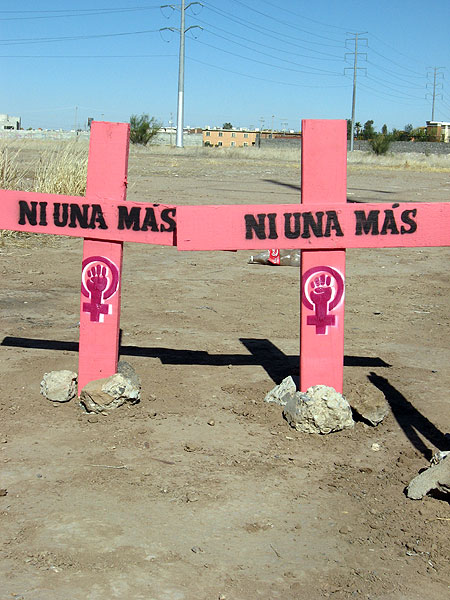 Some analysts have confirmed that Ciudad Juarez, Chihuahua, is a kind of laboratory for public policies that are eventually applied to other parts of the country. As an example, they refer to the maquiladora model, which first emerged in Juarez in 1965. Maquiladoras are of course now found throughout other parts of northern Mexico.
Some analysts have confirmed that Ciudad Juarez, Chihuahua, is a kind of laboratory for public policies that are eventually applied to other parts of the country. As an example, they refer to the maquiladora model, which first emerged in Juarez in 1965. Maquiladoras are of course now found throughout other parts of northern Mexico.
Since 1993 the mass killing of women, which was later termed feminicide, has been taking place in Juarez. The vast majority of the cases are unsolved with perpetrators going unpunished. For a long time governmental authorities denied that the murders were part of an ongoing phenomenon of violence against women.
In the past three years, Ciudad Juarez has become one of the most violent cities in the world. Murders are reported on a daily basis in a city that has turned into a battleground for Felipe Calderón’s “war on drugs.” The State’s strategy, which has met with little success, is to fight drug cartels by increasing military and police patrols in the streets. In fact, increased military presence has seen an explosion in the number of complaints and reports by the public regarding abuse of authority and human rights violations. Since the arrival of the military in Operativo Conjunto Chihuahua the number of dead from this so-called war has increased markedly.
The city’s civilian population has not met this crisis silently. Various organizations have been created to report and resist impunity since the onset of feminicidal killings in the city; their work has been appreciated and followed in other parts of the country and, indeed, the world. Increased militarization of the city and the escalation of violence has led to vocal opposition from citizens, who have spoken out against the military’s abuse of power and its murders of young people, referred to in Spanish as juvenicidio. The President of Mexico faced the rage of the people of Juarez head-on in February when the mother of two youths assassinated at a fiesta at the beginning of that month (where 18 persons were shot) rebuked him on the lack of justice in this as in other cases.
Despite this, Calderón refuses to withdraw the military from Juarez, arguing that its presence is necessary in the fight against organized crime. Given the way matters are currently going, the recognition that Juarez is a laboratory for the country’s public policies could lead to an even more violent and uncertain future for the rest of Mexico.
… … …



